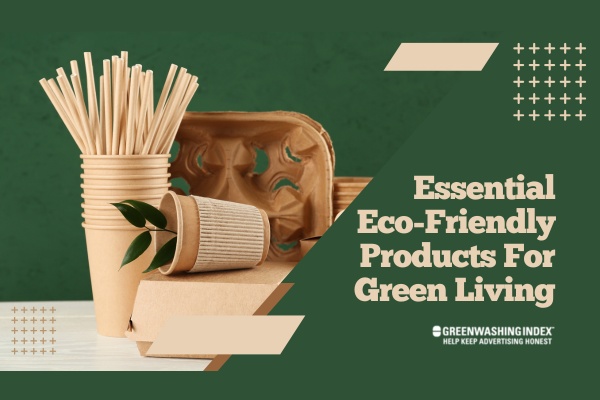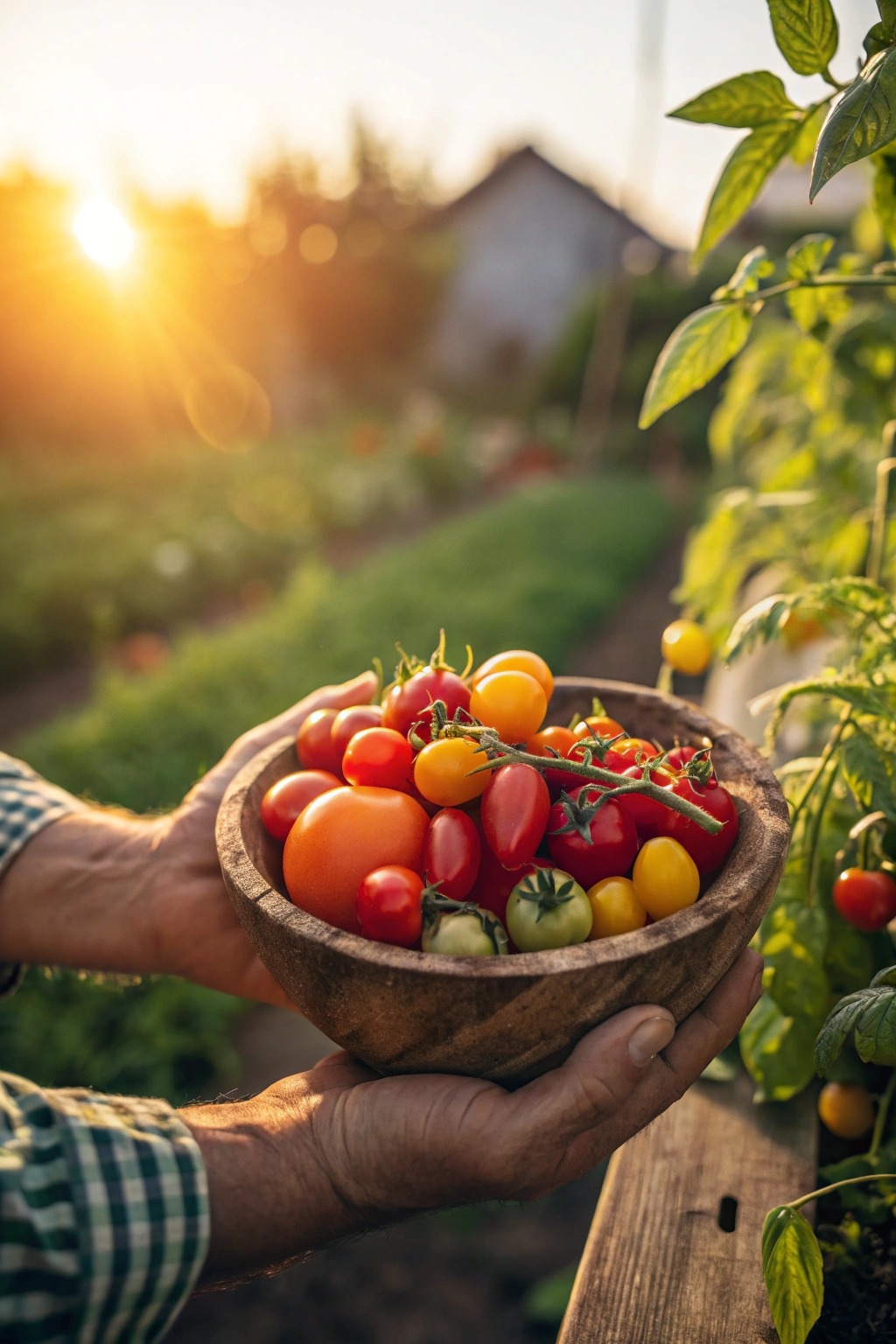Every choice we make influences the environment, and the shift towards eco-friendly products is a powerful step in redefining our impact. As awareness grows, many are discovering that simple changes can lead to significant benefits for both our health and the planet.
Replacing everyday items with sustainable alternatives that not only reduce waste but also enhance your lifestyle. With a myriad of options available, embracing eco-friendly products is not just a trend; it’s a vital movement towards a sustainable future.
What do you Mean by Eco Friendly Products?
Eco-friendly products, also known as green or environmentally friendly products, are designed to minimize harm to both the environment and human health. These products are made from sustainable materials, are often reusable or recyclable, and are produced through processes that reduce pollution and waste.
The growing awareness of environmental issues has led to a significant increase in the demand for such products, as consumers seek to make more responsible choices in their daily lives. By opting for eco-friendly alternatives, individuals can contribute to the preservation of natural resources and promote a healthier planet.
Exploring 10 Must-Know Green Alternatives
Exploring eco-friendly alternatives is essential for reducing our environmental impact and promoting sustainability. As awareness of plastic pollution grows, many individuals are seeking out greener options for everyday products. Here are ten must-know green alternatives that can help replace harmful plastics in our lives:
1. Reusable Shopping Bags
Reusable shopping bags are an eco-friendly alternative to single-use plastic bags, designed to be used multiple times. They are often made from durable materials such as cotton, jute, or synthetic fibers, allowing them to withstand repeated use. The adoption of reusable bags helps reduce plastic waste, which is a significant contributor to environmental pollution.
While the production of reusable bags requires more energy compared to single-use bags, their longevity makes them a more sustainable choice when used frequently.
Key Features of Reusable Shopping Bags:
- Durability: Made from strong materials like canvas or jute, reusable bags can last for years if cared for properly.
- Environmental Impact: One reusable bag can replace up to 600 single-use plastic bags over its lifetime, significantly reducing waste.
- Cost-Effective: Although the initial purchase price is higher, reusable bags save money in the long run by eliminating the need for constant repurchases of disposable bags.
- Variety: Available in various styles and sizes, including tote bags and string bags, they cater to different shopping needs.
- Promotional Incentives: Many retailers offer discounts or rewards for customers who bring their own bags, encouraging sustainable shopping practices.
- Recyclability: At the end of their life cycle, many reusable bags can be recycled or repurposed, further minimizing their environmental footprint.
By choosing reusable shopping bags, consumers contribute to a reduction in plastic pollution and promote a more sustainable lifestyle.
2. Bamboo Toothbrushes
Bamboo toothbrushes are gaining popularity as a sustainable alternative to traditional plastic toothbrushes. Made from bamboo, a rapidly renewable resource, these toothbrushes offer several environmental benefits while maintaining effective oral hygiene. Unlike plastic, bamboo is biodegradable and compostable, significantly reducing plastic waste in landfills and oceans. Additionally, bamboo toothbrushes often feature soft nylon bristles that provide effective cleaning without damaging gums or enamel. Here are some key benefits of using bamboo toothbrushes:
Benefits of Bamboo Toothbrushes:
- Eco-Friendly: Bamboo toothbrushes are 100% biodegradable and compostable, making them an excellent choice for reducing plastic waste.
- Sustainable Sourcing: Bamboo grows quickly and requires minimal water and no pesticides, making it a sustainable material.
- Durability: Despite being made from natural materials, bamboo toothbrushes are sturdy and can last as long as traditional plastic brushes.
- Natural Antimicrobial Properties: Bamboo contains substances that inhibit bacterial growth, helping to keep the toothbrush cleaner between uses.
- Effective Cleaning: The soft nylon bristles provide a thorough clean comparable to that of plastic toothbrushes, ensuring good oral hygiene.
- Reduced Carbon Footprint: By switching to bamboo, consumers can significantly lower their carbon footprint associated with dental care products.
- Variety of Options: Bamboo toothbrushes come in various colors and sizes, catering to both adults and children.
Switching to a bamboo toothbrush is a simple yet impactful step towards a more sustainable lifestyle, contributing to the reduction of plastic pollution while promoting oral health.
3. Solar-powered Charger
Solar-powered chargers are innovative devices that harness sunlight to generate electricity, allowing users to charge a variety of electronic devices while on the go. These chargers are particularly useful for outdoor enthusiasts, travelers, and anyone in need of a reliable power source without access to traditional electricity.
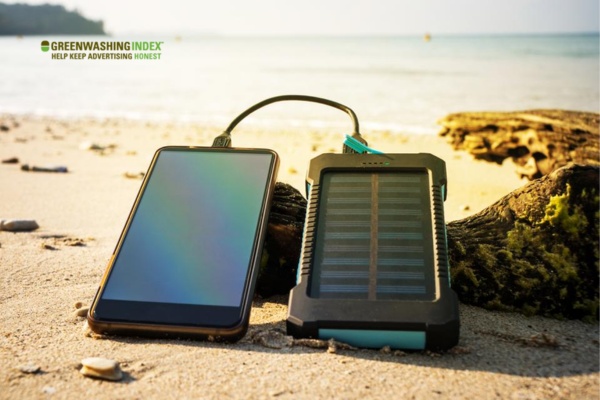
They operate using photovoltaic (PV) cells, which convert sunlight into electrical energy. With the growing emphasis on renewable energy, solar chargers offer an eco-friendly alternative to conventional charging methods. Below are key features, benefits, and limitations of solar-powered chargers:
Key Features:
- Photovoltaic Cells: Solar chargers consist of PV cells that convert sunlight into electricity.
- Rechargeable Battery: They typically include a battery to store energy for later use.
- Charge Controller: This component regulates voltage output to prevent overcharging.
Benefits:
- Renewable Energy Source: Solar energy is abundant and sustainable.
- Cost-effective: Reduces reliance on conventional electricity, leading to potential savings.
- Portability: Many models are lightweight and easy to carry.
- Low Maintenance: Requires minimal upkeep compared to traditional chargers.
- Versatility: Can charge various devices such as smartphones, laptops, and cameras.
Limitations:
- Slow Charging Speed: Solar chargers often take longer to charge devices compared to standard chargers.
- Dependence on Sunlight: Effectiveness is limited by weather conditions and time of day.
- Lower Power Output: Typically less powerful than conventional chargers, making them more suitable for maintaining battery levels rather than fully recharging dead batteries.
In conclusion, solar-powered chargers represent a practical solution for those seeking sustainable energy options while enjoying the convenience of portable charging capabilities.
4. Cloth Diapers
Cloth diapers, also known as reusable diapers, have gained popularity among parents seeking eco-friendly and cost-effective diapering solutions. Made from natural materials like cotton, bamboo, or hemp, these diapers provide a soft and breathable option for babies.
Unlike disposable diapers, which contribute significantly to landfill waste, cloth diapers can be reused multiple times, making them a sustainable choice. While the initial investment may be higher, the long-term savings and reduced environmental impact make cloth diapers an appealing option for many families.
Benefits of Cloth Diapers:
- Cost-Effective: Over time, cloth diapers can save families up to $1,500-$2,000 compared to disposables due to their reusable nature.
- Environmental Sustainability: Cloth diapers reduce landfill waste significantly since they are reusable and made from renewable resources.
- Gentler on Skin: Typically free from harmful chemicals and dyes found in disposables, cloth diapers minimize the risk of skin irritations and rashes.
- Better Air Circulation: They allow for improved airflow around the baby’s skin, further reducing the likelihood of diaper rash.
- Adorable Designs: Cloth diapers come in a variety of colors and patterns, allowing parents to express their baby’s style.
- Potentially Faster Potty Training: Some studies suggest that babies in cloth diapers may potty train faster due to increased awareness of wetness.
Limitations of Cloth Diapers:
- Higher Upfront Cost: The initial purchase of cloth diapers can be expensive compared to disposables.
- Increased Laundry: Cloth diapers require regular washing, which can be time-consuming for parents.
- Learning Curve: New users may find cloth diapering more complex initially, though modern designs have simplified the process.
- Less Absorbent: Cloth diapers may need to be changed more frequently to prevent leaks and maintain comfort.
In summary, while cloth diapers present certain challenges, their benefits in terms of cost savings, environmental impact, and baby comfort make them an increasingly popular choice for eco-conscious families.
5. Composting at Home
Composting at home is an effective way to recycle organic waste, reduce landfill contributions, and create nutrient-rich soil for gardening. This process involves the biological decomposition of organic materials, such as food scraps and yard waste, into compost that enriches soil health and supports plant growth.
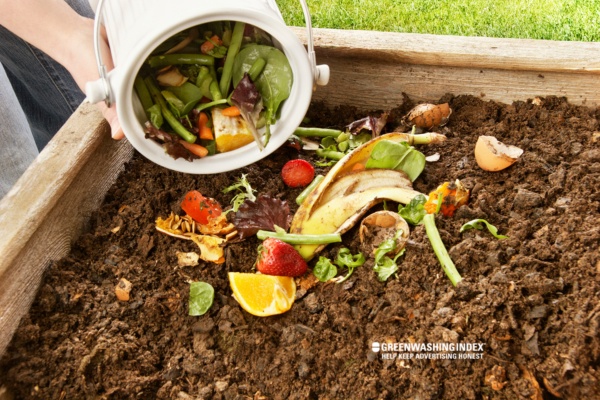
By engaging in home composting, individuals can significantly decrease methane emissions from landfills, which are a major contributor to climate change. The following outlines the essential steps and considerations for successful home composting.
Steps for Composting at Home:
- Set Up Your Bin: Choose a suitable compost bin based on your space—closed bins for indoors and open bins for outdoor use. Ensure proper drainage and locate it in a dry, shady area.
- Gather Materials: Collect kitchen scraps (fruits, vegetables, coffee grounds) and yard waste (leaves, grass clippings). Aim for a carbon-to-nitrogen ratio of about 2-4 parts brown (carbon-rich) materials to 1 part green (nitrogen-rich) materials.
- Layering: Start with coarse materials for airflow, then alternate layers of greens and browns. Bury food scraps in the pile’s center to minimize odors.
- Maintain Moisture and Airflow: Keep the compost pile moist (40%-60% moisture) and turn it regularly to aerate the mixture. This promotes faster decomposition and prevents unpleasant smells.
- Monitor Temperature: Aim for a temperature above 131°F to kill pathogens and weed seeds. Use a compost thermometer to check the internal temperature.
- Harvesting Compost: After 3 to 12 months, your compost is ready when it is dark, crumbly, and has an earthy smell. Use it to enrich your garden soil or potted plants.
6. Natural Cleaning Solutions
Natural cleaning solutions are an eco-friendly alternative to conventional cleaning products, offering effective cleaning power without harmful chemicals. These solutions utilize common household ingredients that are safe for both the environment and human health.
By making your own cleaning products, you can control the ingredients, reduce plastic waste, and save money. Below are some popular recipes for creating effective natural cleaners at home.
Homemade Natural Cleaning Solutions:
All-Purpose Cleaner:
- Ingredients: 1/2 cup white vinegar, 2 tablespoons baking soda, 10 drops of essential oil (tea tree, lavender, or lemon).
- Instructions: Mix vinegar and essential oils in a spray bottle. Add baking soda carefully, then fill with water and shake gently.
Soft-Scrub Cleaner:
- Ingredients: 1 ½ cups baking soda, ½ cup liquid laundry soap, 10 drops of essential oil.
- Instructions: Combine baking soda and soap to form a paste. Add essential oil and store in an airtight container.
Disinfectant Wipes:
- Ingredients: 1 cup water, ¼ cup vinegar, 8 drops each of tea tree, eucalyptus, and lemon essential oils.
- Instructions: Mix ingredients in a bowl and pour over cloth squares in a container.
Glass Cleaner:
- Ingredients: ¼ cup white vinegar, ¼ cup isopropyl alcohol, 1 tablespoon cornstarch, 2 cups water.
- Instructions: Combine all ingredients in a spray bottle. Shake well before use to prevent streaking.
Carpet Freshener:
- Ingredients: 2 cups Borax, 1 cup baking soda, 10 drops of essential oil.
- Instructions: Mix ingredients in a bowl and store in an airtight container. Sprinkle on carpet and vacuum after half an hour.
Using these natural cleaning solutions not only helps maintain a clean home but also contributes to a healthier environment by minimizing chemical exposure.
7. Water-saving Shower Heads
Water-saving shower heads help your home use less water when you take a shower. They work by mixing air with water or by making the water droplets come out in a way that feels like more water than it really is. This means you can still enjoy your shower without using too much water.
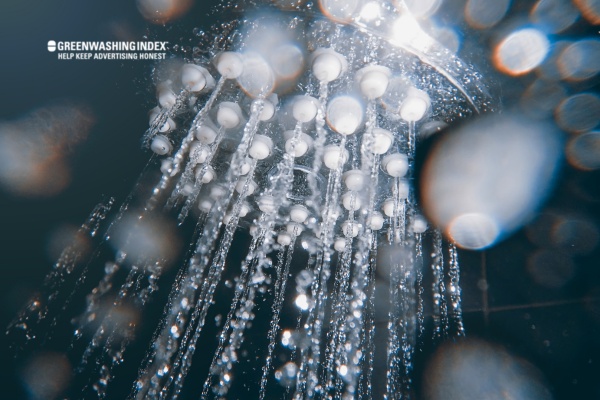
When you use a regular shower head, a lot of water comes out fast. But with a water-efficient one, it cuts down on the amount you use. For example, old shower heads might use up to 5 gallons of water per minute. A water-saving shower head uses around 2 gallons or even less per minute.
So how does this save water? Let’s say someone takes a 10-minute shower every day. With an old-style head, they could be using about 50 gallons each time they wash! Now, if they switch to a water-efficient head using only 2 gallons per minute, they’d only use 20 gallons per wash instead. That’s saving about 30 gallons of water each time someone showers!
This change can make a big difference in your home’s total water use and can cut down on your utility bills because heating less water saves energy too!
8. Organic Food Consumption
When we talk about organic foods, we mean foods that are grown without synthetic pesticides or fertilizers and without genetic engineering or radiation.
Eating organic is good for our health because these types of foods usually have more beneficial nutrients like antioxidants because of the way they are grown.
For our planet, organic farming is better as well because it doesn’t harm the soil with chemicals, which means farms can keep growing food there for longer periods without hurting the land.
Organic farming also helps with taking care of our wildlife – since no harsh chemicals are used that could hurt animals or insects like bees which we need to pollinate plants.
In short, when we choose organic foods over others:
- We take in fewer chemicals.
- It’s better for our body’s nourishment.
- Helps keep farms producing food long-term.
- It cares for animals and insects around us.
By eating organic food whenever possible, not only do we get healthier food now but we also help make sure there will be healthy food grown in the future too!
9. LED Light Bulbs
LED light bulbs, or Light Emitting Diodes (LEDs), represent a significant advancement in lighting technology. Unlike traditional incandescent or fluorescent bulbs, LEDs are energy-efficient, durable, and long-lasting. They produce light through a semiconductor process known as electroluminescence, which allows them to emit light without generating excessive heat.
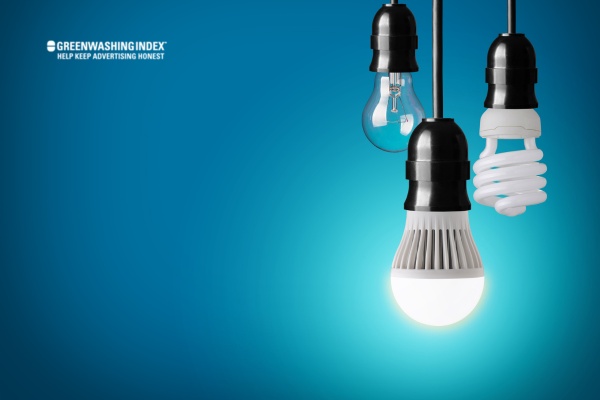
This efficiency translates to lower energy bills and reduced environmental impact. As the technology continues to evolve, LED bulbs are becoming increasingly versatile and affordable, making them a popular choice for both residential and commercial applications.
LEDs shine brighter than conventional lights while using much less electricity – typically up to 75% less for the same brightness! This means LED lights turn more electricity into light rather than wasting it as heat (like older bulbs do).
Since LEDs don’t waste electricity heating up like old bulbs do:
- They last longer (sometimes even years!).
- You save money by not having to change bulbs all the time.
- Your electric bill goes down since LEDs need less power to run.
By switching over to LED bulbs at home or work, not only will you cut costs on energy bills but also contribute towards saving energy on a bigger scale which helps combat climate change!
10. Low-flow Toilet
Low-flow toilets are designed to conserve water while providing effective waste removal, making them an essential upgrade for environmentally conscious homeowners. Since their introduction in the 1990s, these toilets have evolved significantly, utilizing advanced flushing technologies to maintain performance while using less water.
By replacing older models that can use up to 7 gallons per flush with low-flow options that use only 1.6 gallons or less, households can save substantial amounts of water and reduce their utility bills. Below are some key benefits and features of low-flow toilets.
Benefits of Low-Flow Toilets:
- Water Conservation: Low-flow toilets use significantly less water per flush, helping to conserve this precious resource. This is especially important in areas facing drought or water shortages.
- Cost Savings: Homeowners can save approximately $100 to $140 annually on water bills by switching to low-flow toilets, as they reduce overall household water consumption.
- Environmental Impact: By lowering water usage, these toilets help reduce the strain on municipal water supplies and wastewater treatment facilities, promoting a more sustainable environment.
- Enhanced Flushing Mechanisms: Modern low-flow toilets utilize innovative designs such as gravity-fed and pressure-assisted systems to ensure effective waste removal with minimal water usage.
- Space Efficiency: Many low-flow models feature compact designs that can save space in smaller bathrooms while offering a modern aesthetic.
- Rebates and Incentives: Homeowners may qualify for rebates from local governments for installing low-flow toilets, further offsetting the initial investment costs.
- Increased Property Value: Installing a low-flow toilet can enhance the resale value of a home, appealing to buyers interested in eco-friendly features.
In summary, low-flow toilets not only provide significant savings on water bills but also contribute positively to environmental conservation efforts, making them a wise choice for modern households.
How to Further Educate Yourself on Living an Eco-Friendly Life?
In our pursuit of becoming more eco-friendly, we always find ourselves hung up on the question of ‘How?’ Learning to live an eco-conscious lifestyle is a journey that requires time and dedication.
Fortunately, several avenues of education and participation can help us accelerate this learning curve. Here are a couple of ways we can immerse ourselves deeper into the world of eco-friendly living:
Community Involvement
Partaking in community activities is one fantastic way to understand green alternatives and their implications better. Let’s explore how engaging with local initiatives can become stepping stones towards adopting an earth-friendly lifestyle:
- Join local green initiatives: Most towns or cities have local environmentally friendly initiatives going on year-round. These may include park clean-ups, tree-planting days, or workshops on sustainable living practices. Participation not only facilitates firsthand learning but also lets you contribute directly towards environmental stability.
- Community gardening: Local community gardens are a great place to delve into organic farming practices first-handedly. Alongside growing fresh produce, these gardens allow you the opportunity to compost your kitchen waste productively. Participating in or starting a community garden is integral for anyone looking for hands-on experience with eco-friendly products.
- Eco-focused book clubs and documentary nights: Knowledge-sharing is key when it comes to sustainable living practices. Joining groups that read sustainability-focused books or watch documentaries about environmental issues can provide enriching perspectives about what being eco-conscious means.
Using Tech to Be More Green
As surprising as it may sound in the context of sustainability and traditional green living techniques, technology today has equipped us with numerous tools that make leading an eco-friendly lifestyle much more approachable:
- Sustainability Apps: Apps like Zero Waste App guide users towards stores selling package-free goods within proximity; others, such as EcoCred, encourage people through daily suggestions for reducing their carbon footprint. These tech products play an integral role in spreading awareness, promoting sustainability, and offering eco-friendly tips.
- Digital Learning Platforms: Online learning platforms offer various courses that explicitly focus on sustainable practices, eco-friendly product choices, and the impact of our everyday activities on the environment.
- Virtual Reality Experiences: Certain cutting-edge tech platforms are providing VR experiences to help people witness their eco-impact virtually. Tools like ‘The Stanford Ocean Acidification Experience’ show you how rising ocean acidity affects marine life. Such vivid experiences underscore why it’s important to make green alternatives part of our everyday lives.
Remember, adopting an eco-conscious lifestyle is not about being perfect but about making consistent efforts to reduce our ecological footprint. Whether you participate in community endeavors or leverage tech for learning, every small step counts towards fostering a sustainable world.
FAQs
Why should we switch to Eco-friendly products?
They are switching to eco-friendly products, which aids in decreasing the carbon footprint, as they are often made with sustainable manufacturing practices and organic materials. These products are designed to last longer, thereby reducing waste.
What is the easiest green change I can make in my life?
The quickest and most convenient change you can make is to use reusable shopping bags. They’re affordable, simple to carry, and significantly cut down on plastic waste each time you shop.
How can eco-friendly products contribute to a sustainable future?
Eco-friendly products help ensure a sustainable future by reducing pollution, conserving natural resources, and promoting ecological balance. These green alternatives also inspire businesses and consumers alike toward more environmentally conscious choices.
Does switching to eco-friendly products really make a difference?
Yes, transitioning to eco-friendly products has a considerable impact on our planet. From cutting down resource usage to shrinking landfill waste, every small step towards an earth-friendly lifestyle contributes significantly in preserving our environment for future generations.
Conclusion
Transitioning to eco-friendly products can significantly enhance our environmental impact. By embracing sustainable alternatives, individuals not only reduce their carbon footprint but also contribute to a healthier planet. It sounds like each small change, whether it’s using reusable bags or opting for natural cleaning solutions, plays a vital role in fostering sustainability.
As more people adopt eco-conscious habits, the cumulative effect can lead to substantial improvements in ecological balance and resource conservation. Ultimately, choosing eco-friendly products reflects a commitment to preserving the environment for future generations.

